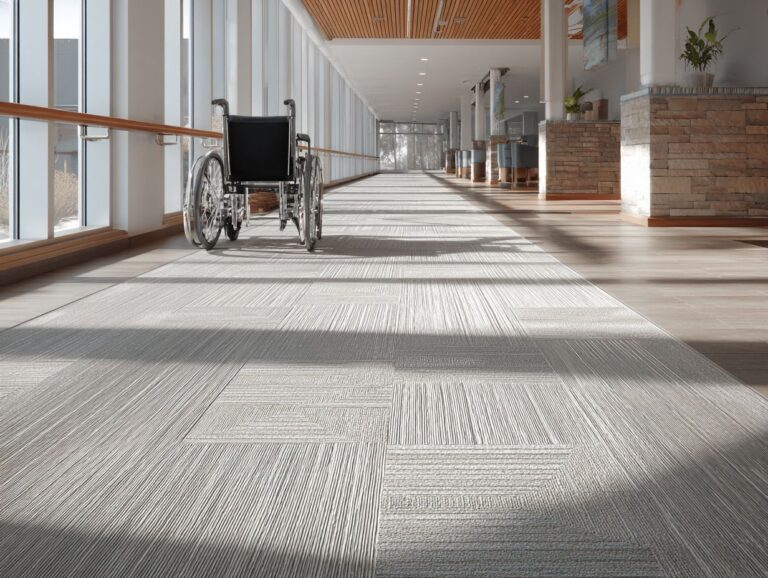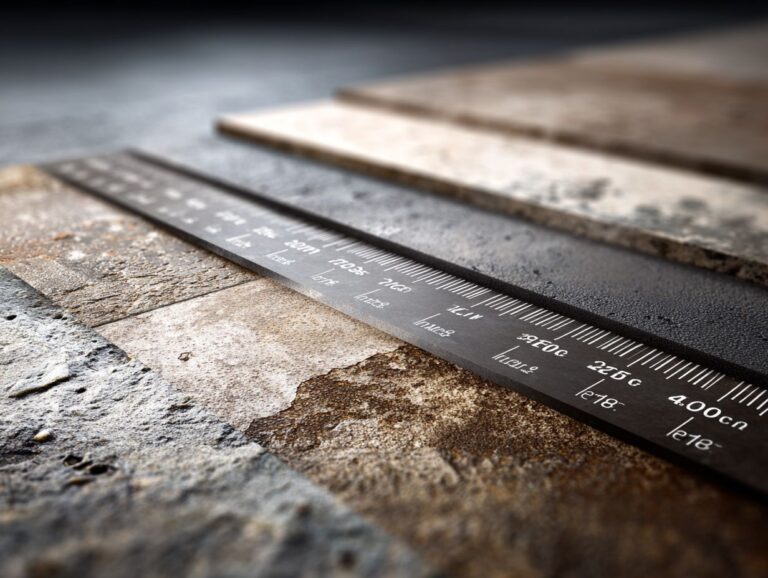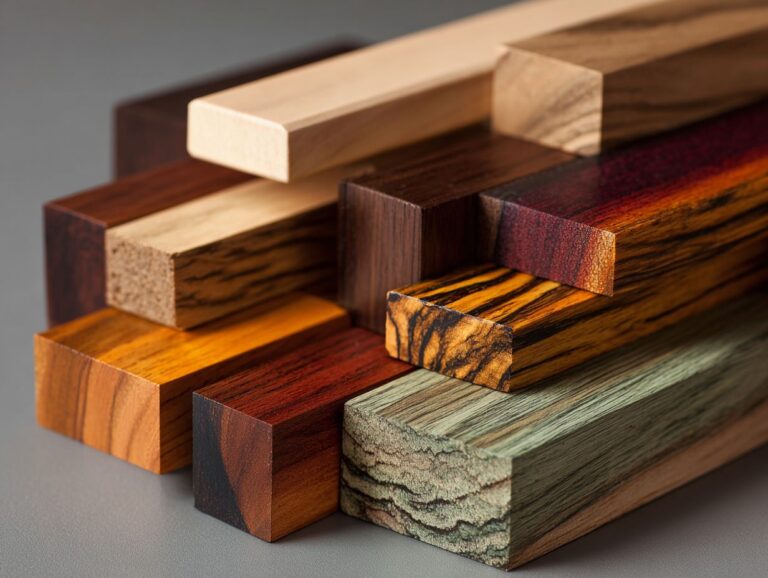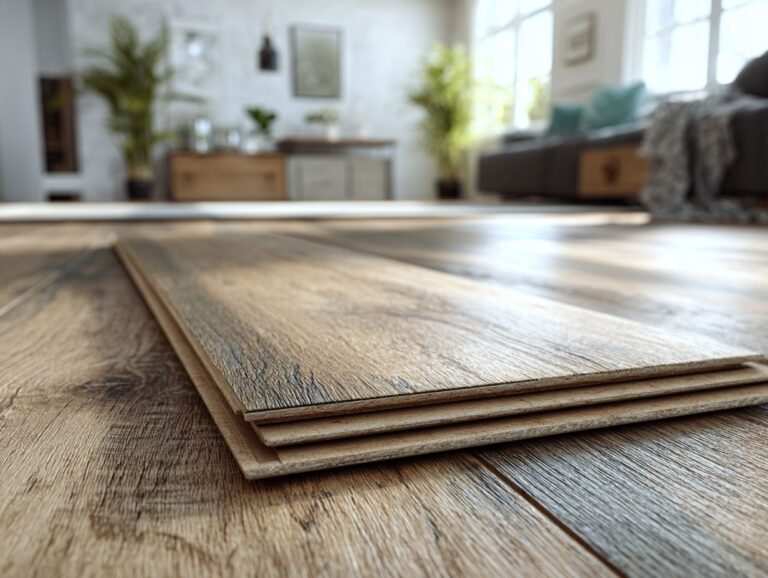Flooring Borders and Inlays – Adding Custom Details
Contents
- Introduction to Flooring Borders and Inlays
- Flooring Borders and Inlays Impact Statistics
- Types of Flooring Borders
- Types of Flooring Inlays
- Materials for Borders and Inlays
- Design Considerations
- Installation Techniques
- Maintenance and Care
- Frequently Asked Questions
- What are flooring borders and inlays?
- What types of materials can be used for flooring borders and inlays?
- How are flooring borders and inlays installed?
- Can flooring borders and inlays be added to any type of flooring?
- What are some popular designs for flooring borders and inlays?
- Do flooring borders and inlays require special maintenance?
Introduction to Flooring Borders and Inlays
Improve your home’s appearance with beautiful hardwood floors featuring unique borders and designs. Businesses such as Rejuvenation Floor & Design, Elite Hardwood Flooring, and Precision Flooring & Design make striking medallions that bring unique style and appeal. This article looks at the advantages of using these detailed elements to change your space with personal touches that show off your style. Learn how these features can change your flooring experience!
Key Takeaways:
Definition and Purpose
Flooring borders mark the edges of hardwood floors, while inlays bring in detailed designs, giving more depth and personality to any area.
Borders help visually frame a room, often incorporating contrasting wood tones or materials, such as a dark walnut border around a light oak floor.
Common border designs include simple straight lines or more complex patterns like herringbone.
Inlays, like compass roses or geometric shapes, add an artistic detail, giving spaces a unique feel.
For example, a circular decoration at the entrance can draw attention, while simple geometric designs can improve the look without being too much.
Benefits of Custom Details
Custom flooring borders and inlays can raise property value by up to 10%, giving homeowners a special mix of beauty and skill.
These improvements make things look better and offer design choices that match personal preferences. For those interested in premium materials, exploring luxury flooring options can further enhance these custom designs.
For example, companies like Elite Hardwood Flooring provide detailed designs that can complement a home’s current style or act as an impressive focal point. By incorporating materials such as maple or walnut, homeowners can create distinct borders that contrast nicely with the primary flooring.
Investing in custom designs can make a property more appealing in the competitive real estate market, resulting in a quicker sale and a higher return on investment.
Flooring Borders and Inlays Impact Statistics
Flooring Borders and Inlays Impact Statistics
Inlays and Borders Usage: Material Preferences
Inlays and Borders Usage: Border Styles
Inlays and Borders Usage: Market Impact
The Flooring Borders and Inlays Impact Statistics give a clear summary of present trends and impacts in the flooring business. This data shows the different materials used for inlays and borders, presents common border styles, and emphasizes how these design elements influence property value and what buyers prefer.
Inlays and Borders Usage data reflects diverse material preferences. Wood inlays lead the category with 40% usage, valued for their warmth and ability to fit different styles, making them suitable for both classic and modern settings. Close behind are stone or tile inlays at 35%, prized for durability and natural aesthetics, often favored in areas like kitchens and bathrooms. Metal inlays account for 20%, offering a modern and sleek appeal, particularly in industrial or minimalist designs. Lastly, decorative inserts comprise 5% These are picked for their ability to add detailed features and custom elements to flooring.
When it comes to Border Styles, wood strips borders top the list at 45%, providing seamless integration with wood floors and a timeless look. Tile or stone bands borders follow at 30%, often used to create striking contrasts or complement tiled areas. Metal trim borders are selected for 15% of designs, providing a contemporary edge and often used to outline or highlight specific areas. Custom design borders make up 10%, offering unique and custom-made flooring options for individuals.
The Market Impact of using inlays and borders is significant. Homes featuring these elements often see an increase in value by 25% They stand out in the real estate market with their improved visual look and skillful work. Furthermore, 30% of buyers are willing to pay a premium for unique flooring features, recognizing the added aesthetic and investment value they bring to a property. These statistics highlight the strategic advantage for homeowners and developers incorporating inlays and borders into their flooring designs, appealing to aesthetics-conscious consumers and adding tangible property value.
Types of Flooring Borders
Different flooring borders suit different styles and requirements, providing a suitable option for any design plan. Those curious about coordinating flooring with room aesthetics might appreciate our insights on flooring and wall color combinations – fail-safe palettes that enhance overall design harmony.
Wood Borders
Wood borders make things look better and can be made from different types of hardwood like oak, walnut, and mahogany.
Herringbone and chevron patterns, for instance, create distinctive visual appeal. Herringbone uses rectangular pieces placed in a staggered layout that looks great in modern spaces. Chevron involves V-shaped cuts that add movement to classic designs.
In a minimalist space, a simple oak herringbone border can provide warmth without overpowering the decor, whereas a rich walnut chevron border adds sophistication to a classic room.
Choosing the right type of wood border improves the look of the room and matches its theme well.
Tile Borders
Tile borders add a modern touch and can be installed in various patterns, enhancing the visual appeal of flooring transitions.
These borders look good and are sturdy, keeping the edges intact.
Common materials include ceramic, known for its wide range of colors and finishes, and porcelain, which is denser and more resistant to moisture.
Installation methods differ; using thin-set mortar creates a strong bond, while putting caulk in the joints gives a neat, flexible finish.
For a sophisticated look, consider geometric patterns or contrasting colors to make the transition areas pop.
Carpet Borders
Carpet borders provide soft edges and smooth transitions between different flooring types, enhancing comfort and safety.
In both homes and offices, carpet borders can be customized to suit the aesthetic of the space. A neutral-colored border can easily match with hardwood floors, while bright patterns can act as a fashionable detail.
When selecting materials, consider using nylon or polyester for durability in high-traffic areas. Integrating a carpet border with a protective edge helps in maintaining the carpet’s shape and prevents fraying, ensuring longevity.
This careful design improves appearance and creates a safer space by minimizing tripping risks.
Types of Flooring Inlays
Flooring inlays can have different shapes or custom designs, allowing a variety of choices for personalization.
Geometric Patterns
Floor inlays with modern geometric designs offer a stylish look, highlighting careful workmanship in every detail.
Common designs feature squares, diamonds, and custom shapes that fit different interior styles.
For a modern look, consider large square inlays with contrasting borders, which can create striking visual interest. Alternatively, diamond patterns can evoke a sense of elegance, particularly when chosen in rich materials such as marble or slate.
Custom shapes can be made to match specific designs, ideal for different or classic styles. Programs like AutoCAD help with accurate design planning, making sure everything fits correctly in your space. To ensure your flooring choices complement your home’s interior, explore our flooring and wall color combinations – fail-safe palettes for expert guidance on color coordination.
Floral Designs
Floral patterns introduce nature indoors, turning wooden floors into a space for creativity.
Companies like Rejuvenation Floor & Design provide beautiful floral inlay options that improve a home’s look. Choices range from simple daisy patterns to detailed vine designs, letting homeowners create a unique look.
For instance, selecting a large peony design can create a stunning focal point in a dining area, whereas subtle leaf inlays may suit a cozy living room.
Each item is made from strong materials that last a long time and have a unique look. When planning installation, talk to experts for correct positioning and alignment to improve the design.
Custom Logos and Symbols
Custom logos and symbols in flooring inlays allow businesses and homeowners to express their identity uniquely.
To create custom inlays, start by clarifying your design vision. Consider materials like resilient vinyl, wood, or stone, balancing aesthetics with durability.
For instance, a caf may choose warm-toned wood with logo inlays to create a welcoming atmosphere, while a tech firm might opt for sleek, modern tiles featuring their logo in bright colors.
Adobe Illustrator can help make detailed designs, and a nearby flooring service can help with installation. Successful case studies, like a local fitness studio that placed motivational logos on its floors, show how custom designs can improve brand identity.
Materials for Borders and Inlays
Different materials can be used for borders and inlays, each providing distinct benefits and looking attractive. When considering such design elements, understanding the dynamics of mixed flooring materials can enhance the appeal and functionality of your space.
Wood Options
Wood options for borders and inlays can include a range of hardwood species like oak, maple, and cherry, each with its distinct characteristics.
Oak is well-known for being strong and long-lasting, which makes it perfect for places with a lot of foot traffic.
Maple, with its fine grain, offers a smooth finish perfect for detailed inlays.
Cherry, prized for its rich color that deepens over time, provides a touch of elegance.
When choosing a finish, consider:
- Oil-based choices for a natural appearance that shows grain details clearly
- Polyurethane for a strong, protective layer
Each finish can drastically alter the final appearance, so test samples before committing to a specific choice.
Tile Choices
Choosing tiles for floor borders can improve both strength and appearance. Options such as ceramic and porcelain offer different design possibilities.
Both ceramic and porcelain tiles are excellent choices for flooring borders, offering specific advantages.
Ceramic tiles are simple to cut and put in place, which makes them suitable for DIY projects. They come in a range of colors and finishes, providing ample design flexibility.
Porcelain tiles are harder and better at blocking water, so they work well in places with a lot of foot traffic or moisture. Glass tiles can be used for striking inlays or accents, bringing a modern touch to the overall design.
Selecting the right material depends on your aesthetic preferences and the environment’s demands.
Carpet Materials
Carpet materials for borders can range from synthetic fibers to natural wool, providing options that balance comfort and durability.
For example, materials like nylon are very strong and resist stains well, making them perfect for high-traffic areas.
In contrast, natural wool provides luxurious softness and is naturally hypoallergenic, but requires more maintenance to preserve its appearance.
For a mix of options, consider polyester, which is eco-friendly and very durable against fading and wear.
When picking a border, think about how it fits with your daily life and style, so it works well and looks good.
Metal and Other Accents
Metal accents in flooring inlays can add a touch of elegance and modernity, enhancing the overall design scheme.
Incorporating materials like brass and stainless steel can be particularly effective. Brass inlays can add a warm and rich appearance to hardwood floors, making them ideal for rooms with a classic style.
Conversely, stainless steel works beautifully in modern settings, often seen in minimalist designs or industrial-style homes. Projects like custom area rugs with metal borders or accent strips in tile layouts showcase how metal can create visual interest while maintaining durability.
These materials improve looks and offer greater durability against damage.
Design Considerations
When planning flooring borders and inlays, various design choices can greatly affect the final appearance and atmosphere of your area.
Room Size and Layout
The size and layout of a room can significantly influence the choice of flooring borders and inlays, affecting the overall design flow.
For smaller rooms, consider subtle patterns that create an illusion of space, such as narrow borders or light-colored inlays. In contrast, bigger spaces can gain from striking, opposite designs that mark distinct sections.
An example includes using dark hardwood borders in an expansive living room to delineate seating areas. Think about the room’s purpose; for a cozy reading nook, a warm, textured rug border can invite relaxation, while sleek, modern lines might suit a contemporary office.
Balance is key to achieving a harmonious look.
Color Schemes
Choosing the right color combinations for flooring borders and inlays can improve the look and feel of a room.
Consider using contrasting colors like deep navy blue for borders against light wood flooring to create a striking visual effect. Alternatively, complementary color schemes, such as pairing a warm beige with earthy green inlays, can add a subtle cohesion.
Tools like Adobe Color and Coolors can help you experiment with these combinations and visualize their impact. Always test samples in the actual space, as lighting can alter how colors appear. This practical method makes sure the final decision matches your design concept.
Style Compatibility
Matching the style of borders, inlays, and current decor is important for a unified appearance.
To create a classic look, choose detailed borders and designs in rich colors such as mahogany or dark greens, similar to those found in traditional dining rooms.
In contrast, modern decor benefits from sleek, minimalistic borders paired with geometric inlays, often using lighter colors such as whites or grays.
For an eclectic style, you can mix unexpected elements; a vintage floral border might beautifully complement a contemporary abstract inlay.
Always consider materials, too-wood gives warmth, while metal offers a sleek edge.
Look at finished projects that combine these elements for ideas.
Installation Techniques
To get great results when putting borders and inlays on hardwood floors, it’s important to use correct installation methods.
Preparation of the Subfloor
Preparing the subfloor is a critical step in ensuring a successful installation of flooring borders and inlays.
Begin by thoroughly inspecting the existing floor for unevenness. Use a laser level to find uneven areas-this tool gives exact measurements, helping you level properly.
If you find dips deeper than 1/8 inch, consider using a self-leveling compound to create a smooth base.
Test for moisture using the plastic sheet method: attach a clear plastic sheet to the floor base and look for water droplets after 24 hours. This step prevents moisture-related issues down the line, ensuring your flooring lasts.
Measuring and Cutting Materials
Measure and cut accurately to ensure flooring edges and inlays fit correctly.
For accurate results, begin with the right tools: use a miter saw for straight cuts, a tape measure for exact measurements, and a square to check angles.
Measure the length and width of the area where the border or inlay will go. Mark your measurements clearly on the material.
When cutting, always double-check the measurements and make sure the material is securely clamped down. For detailed designs, use a jigsaw for curves.
Measuring accurately now can prevent expensive errors later.
Securing Borders and Inlays
Fixing borders and inlays properly keeps them secure and long-lasting.
To achieve this, use strong adhesives like construction glue for a lasting bond, ensuring surfaces are clean and dry.
For fastening, consider employing a nail gun with finishing nails, as this method minimizes damage while providing strength.
For tile installations, a trowel is essential for evenly spreading thin-set mortar.
Clamps can be useful during curing, holding the edges securely against the surface.
By using these methods, you’ll make your borders and inlays last longer and look better.
Maintenance and Care
Regular maintenance and care are essential for preserving the beauty and integrity of flooring borders and inlays.
To effectively maintain your flooring edges, consider the following cleaning methods:
- Use a soft broom or vacuum weekly to remove debris.
- Employ a damp microfiber cloth for spot cleaning.
- Apply a pH-neutral floor cleaner monthly to prevent buildup.
To keep wood inlays shiny and shield them from scratches, regularly use a special wood polish.
To clean tile borders, carefully scrub with a baking soda paste to get rid of dirt without damaging the surface.
Tailoring your approach based on the material will prolong the lifespan and appearance of your flooring.
Frequently Asked Questions
What are flooring borders and inlays?
Flooring borders and inlays are decorative design elements that are added to flooring to create unique and custom details. They can be made from different materials and can be added to a variety of flooring types.
What types of materials can be used for flooring borders and inlays?
There are a variety of materials that can be used for flooring borders and inlays, including wood, tile, stone, and metal. Each material adds a different aesthetic to the flooring and can be chosen based on personal preference and the existing flooring material.
How are flooring borders and inlays installed?
The installation process for flooring borders and inlays will depend on the type of material being used. Generally, they are installed using adhesive or by being inserted into a groove in the existing flooring. Hire a professional for installation to get the placement right and a smooth finish.
Can flooring borders and inlays be added to any type of flooring?
Flooring borders and inlays can be added to a variety of flooring types, including hardwood, laminate, tile, and even carpet. The choice of material for the border or inlay depends on the flooring type it is being applied to.
What are some popular designs for flooring borders and inlays?
Some popular designs for flooring borders and inlays include geometric patterns, floral designs, and traditional borders. These can be customized to fit the style and aesthetic of the room and can add a unique and personal touch to the flooring.
Do flooring borders and inlays require special maintenance?
While flooring borders and inlays do not require any special maintenance, it’s important to clean and care for them as you would with the rest of the flooring. It is suggested to frequently sweep and mop, and to quickly clean any spills or stains to prevent harm to the edges or decorative pieces.




